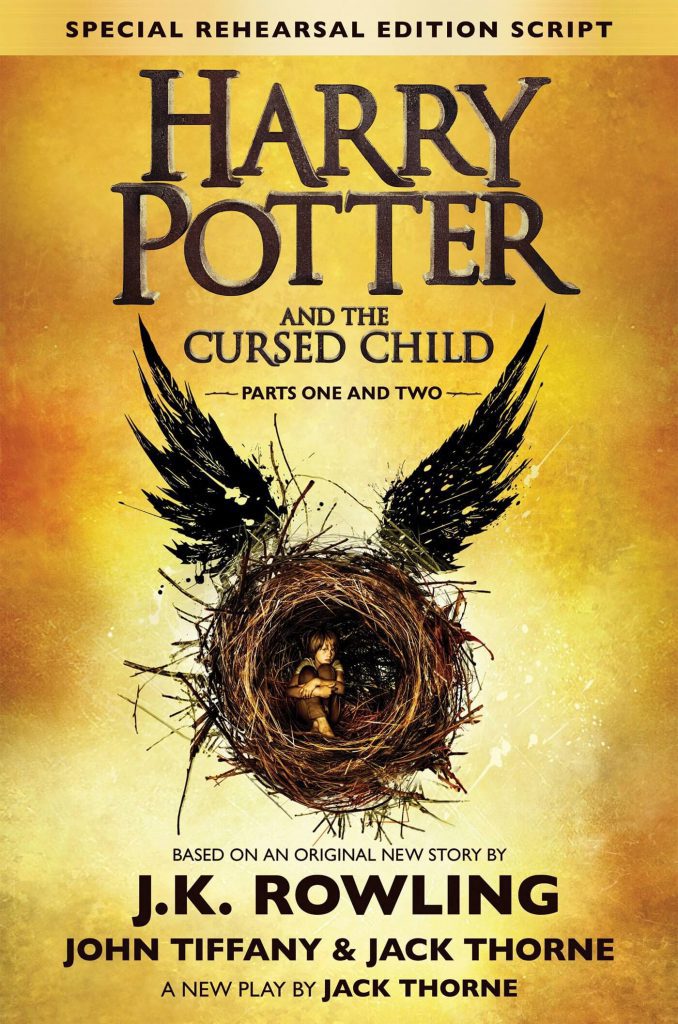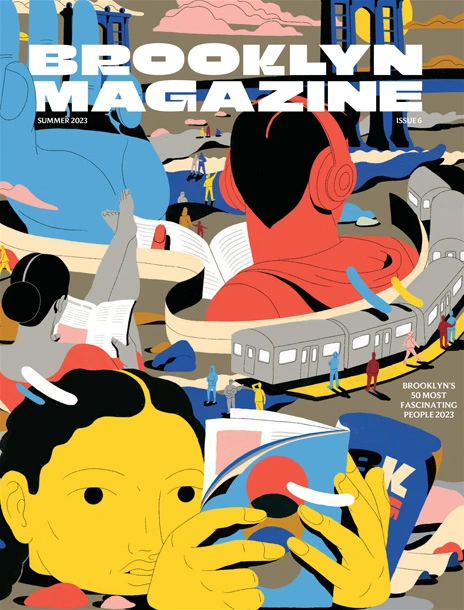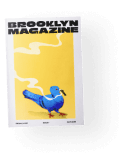Harry Potter and the Story That Did Not End: On The Cursed Child and J.K. Rowling’s Ever-Expanding Universe
I believed J.K. Rowling, back in 2007, when she said to Meredith Vieira on the Today Show, “I think I’ve kinda done the Wizarding World.”
Vieira pushes Rowling on this point–the series had by then taken up seventeen years, nearly two decades, of her life. How could a project of that scope be over?
“You can look out at these sweet innocent faces,” Viera asks, “and say ‘There will never be another Harry Potter book’?”
Rowling laughs. “I have done my Harry Potter.”
It has been nine years, nearly another decade, since that conversation took place, and in retrospect I can say with confidence: This is not true. It has never been true. The printer’s ink was barely dry before Rowling began to describe the Hufflepuff common room, or how Tonks and Lupin’s child would be raised. But her methods of addendum, since 2007, don’t happen in novels. (In that sense, Rowling has made good on her promise.) New canonical information flows from: Pottermore, the fictional universe’s official website; Rowling’s Twitter account; interviews; a forthcoming movie trilogy; and now two plays, Harry Potter and the Cursed Child, produced in tandem in London with scripts available for sale in a single volume worldwide. This is Harry Potter’s long, strange afterlife. Or maybe it’s more like an undeath.


At first, the revelations seemed mostly benign, if expressions of too-little-too-late stabs toward diversity. Dumbledore was gay. Jewish students did attend Hogwarts. Rowling was never good at this even in the books: Cho Chang’s name is an awkward mash of two surnames, one common in Korea and both common in China. (Imagine, in comparison, a Giovannetti Johansson.) But in the novels she had other work to distract her from her very real cultural limitations. Now, she’s a baker with all frosting and no cake.
I thought the new information would eventually taper off with no new novels to fuel them. That Rowling would run out of material, or steam, or interest. But somehow the Wizarding World has grown more rapidly in the past year than it has, arguably, since 2000’s Harry Potter and the Goblet of Fire, which offered a tantalizing glimpse at global wizardry in its opening chapters at the Quidditch World Cup. There, it was world that even–especially–in passing looked so much bigger than the series’s many 4,224 pages could contain. Here, each additional postscript, whether it’s communicated via website or stage, makes that world look to me all the more smaller, simpler, duller. Really the opposite of magic, which is another word for possibility.
In January of 2016, Pottermore announced the revelation of three new magic schools across the world. We learned that Brazil’s school for magic is named Castelobruxo, which just means “Wizard Castle” in Portuguese. Wizard Castle. What intern was given only five minutes to find a name on Google Translate? What manager decided it was okay to press publish without, maybe, having a thoughtful conversation with any Brazilian person? We also learned in January that Africa’s Uagadou (Pottermore helpfully provides the pronunciation guide “Wag-a-doo”), unlike its peer institutions in Brazil and Japan, was located not in a country but just a continent in general. When pressed, Rowling said Uagadou was located in Uganda; yet its name likely derives from a designation (Wagadu) for the 300-1300 CE Ghana Empire, located in present day Mali and Mauritania and over 3,200 miles away from Uganda as the crow (or owl) (or something called “Dream Messenger”) flies. The school’s magical specialty is producing animagi. *thinking face emoji* *the opening song to Lion King plays softly in the background*
In June of 2016, Pottermore unveiled yet another new entry into the fictional universe: “A History of Magic in North America.” What a surprise to learn that that history begins with European contact! Like in her discussion of “Wag-a-doo”–sorry, Uagadou–Rowling insists that wands are European magical inventions, which channel and so enhance the power of its wielders. (Though, confusingly, she notes that transfiguration is difficult without a wand, yet the wandless pan-African students at Uagadou excel at animal transformation. Perhaps it is some inborn skill.) The issues with “Magic in North America” are many, and they have been peeled back with greater skill and intelligence than I can muster here. See, for example, Debbie Reese’s excellent round up on her blog, “Native People Respond to Rowling”. And in her Salon article, Paula Young Lee summarizes the issues especially well:
1) It uncritically valorizes and replicates the power structures enacted by British colonialism.
2) “Magic” gets organized when the white people show up (what, the Algonquin, Pawtuxet, Wampanoag and other tribes didn’t have schools to teach their kids how to use their powers), and appropriates Native traditions while erasing Native peoples.
3) It misunderstands American culture, geography, and history, and there are so many errors that they undermine the integrity of the story, while just plain confusing readers.
2) “Magic” gets organized when the white people show up (what, the Algonquin, Pawtuxet, Wampanoag and other tribes didn’t have schools to teach their kids how to use their powers), and appropriates Native traditions while erasing Native peoples.
3) It misunderstands American culture, geography, and history, and there are so many errors that they undermine the integrity of the story, while just plain confusing readers.
I don’t expect Rowling to be an expert on half a millennia of North American history. I don’t need her to be either. I don’t require the name of the Brazilian school to still love Harry Potter. I especially don’t want an impoverished vision of Africa on its behalf either. I am okay with a British woman writing just about Britain. And now, as these ambitious but utter failures in imagination and research cast shadows over her initial achievement, the seven books of the Harry Potter series, it’s all the more sad and stark to me that Rowling failed there too–in writing about Britons of color, in writing about queer witches and wizards, in writing about witch birth control (still waiting for the memo on that, Jo). As Harry Potter grows, its power weakens: with each new expansion, a constriction; with each new detail, an impoverishment; with each new revelation, a falsehood. The revisions Rowling now imposes on her series do not make sense. They are lazy and dumb and actually straight-up racist. It’s the racism of your well-meaning rich and liberal aunt, but it’s still racism.
On July 30, Harry Potter and J.K. Rowling’s birthday, Harry Potter and the Cursed Child arrived with much of the fanfare of a new Rowling-authored Harry Potter novel. It is new but–though she approved the story–it’s neither by Rowling nor a novel. Reviews indicate that the production of The Cursed Child, which premiered in London the same day, is lovely, well-acted, and affecting. But I don’t live in London and ticket to Hamilton are easier to snag, so I bought the stupid script, begrudgingly, for $30 at a Hudson News in the Newark airport. It made me sad: the print was so large, the words so few, and the pages so many. It’s the production wizardry of a publisher who wants to fluff up, make serious (length obviously equals seriousness), a book that might not otherwise appear so: the work of a Vegas illusionist rather than a Hogwarts charms professor. The cover is also unavoidably, extraordinarily ugly. But I settled in for a longish flight and opened to the first page, returning–reluctant but still hungry–to a table I knew now only offered scraps.
I will tell you that I cried several times, but that is more a measure of the success of the seven previous novels: that an image of an ethereal doe makes my eyes go automatically wet. It’s both not terrible and quite bad at the same time. I can see how the show succeeds on the stage, and I enjoyed much of what I read on the page. But it’s a story that runs roughshod over the past (time travel is involved), cheapening some of the most haunting moments of the series: Lily and James’s death, Snape’s death, Cedric’s. Though it is a story, it’s not a game. At least, it can’t be if it the story is meant to be any good. I’ve publicly aired my issues with the epilogue to Harry Potter and the Deathly Hallows before , and my disappointment with the smallness of their world, one in which no one ever meets anyone new and you must marry the person you half-fancied at age fifteen, remains. Blows hit but don’t land, relatives are erased from the timeline with little remorse, there are still somehow no gay characters, Hermione turns into career-thwarted shrew (aka Snape 2.0) without a man in her life (??? what the actual fuck ???), and no new information on witch birth control. It’s a mess. It doesn’t make sense. Most of all, it’s sad that this story (at least for now) ends like this. “All was well” was bad enough. “So do I” is worse.
I would love for Rowling to write a novel–any novel. The Casual Vacancy II. More mysteries. Hell, after all this actual crap, I will still take another Wizarding World novel. It just has to be a novel, a novel where Rowling–because she is a truly brilliant writer, one whose imagination glows like the brightest patronus–must commit to the world she draws, must imagine the lives of the people who live within it.
At the London premiere of The Cursed Child, nine years after talking with Meredith Vieira, Rowling answered a similar question: What’s next for Harry Potter? “Yeah, I think we’re done,” she said. “Harry is done now.”
I wouldn’t bet on it.
Lead photo courtesy of Harry Potter and The Cursed Child Website
You might also like 




















